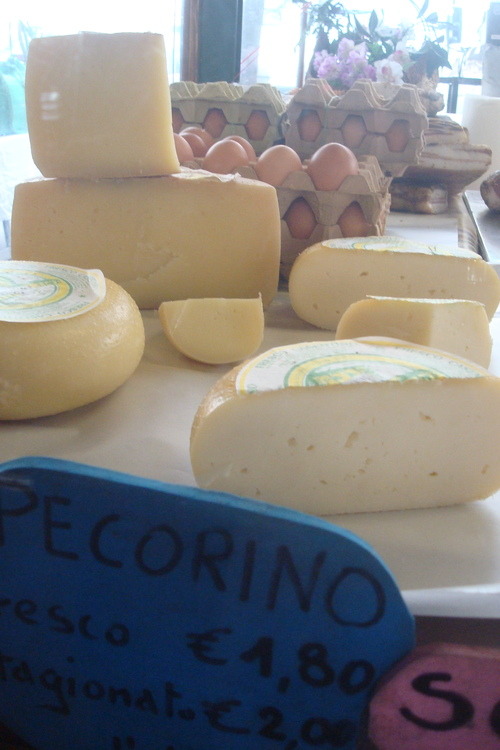Sage is here to help.
Feel like you could be eating better? Not sure what to change or where to look? Sage Nutritious Solutions make it easy for you to discover the wide, wonderful world of balanced, healthy, bangin' food.
Ingredient Spotlight: Italian Cheeses
Cheese is a food that is a part of many cultures. In America, we not only value the cheeses that have been produced since our country's inception, but our palates welcome cheese from all around the world. In this Ingredient Spotlight, we are going to talk about one country's cheeses that we find most recognizable: Italy.
Pecorino is simply a jumping point from which a series of other cheeses are produced. Pecorino fresco (pecorino Toscano fresco) is a fresh sheep’s milk cheese from the area of Tuscany, which is the youngest of a family of Tuscan pecorino cheese protected by PDO (protected designated origin) classification. Pecorino Toscano is a firm sheep’s milk cheese. Early pecorino toscano cheeses have a light, creamy, delicate flavor. As this cheese ages, the maturation process transforms it into one that is salty and biting known as pecorino Toscano stagionato. This is similar to parmigiano reggiano, with which it is commonly replaced in recipes. Pecorino sardo is a hard sheep’s milk cheese with PDO classification from Sardinia. This cheese is cultured using rennet from lamb, the end product providing a richer, more delicate flavor over its Tuscano or Romano cousins. Pecorino Bolognese is common in many places within Bologna, but not anywhere else due to the availability of more local pecorino varieties. This cheese resembles pecorino Toscano stagionato, with its darker rind and harder texture. Pecorino sardo is a hard sheep’s milk cheese with PDO classification from Sardinia. This cheese is cultured using rennet from lamb, the end product providing a richer, more delicate flavor over its Tuscano or Romano cousins.

Ricotta is a fresh dairy product, not technically considered cheese, as it is derived from the whey of cow’s or sheep’s milk. Unlike cheese, coagulation of ricotta takes place due to the increased temperature and acidity associated with the cooking process. After draining and cooling, this cheese is usually eaten fresh or with additional flavor added. Ricotta salata is simply ricotta with salt added.

Parmigiano Reggiano is the best known of the Italian cheeses, due to its coalition of cheese makers despite its tenure of only around 100 years. This type of cow’s milk cheese is designated by the DOC (denomination of origin) criteria, restricting production to the Po Valley using specific techniques. The feed for these cows is closely regulated to fit the parameters for parmigianno reggiano due to its DOC classification. However, other locations may manufacture parmesan without adhering to DOC criteria or location specificities. This cheese is a very hard cheese perfect for grating, aged 18-24 months. Emilia Romana produces three different kinds of parmigiano reggiano, as well: mezzano, stravecchio, and vacche rosse. Mezzano is a young parmigiano reggiano aged for 18 months with a light sweet flavor profile. This cheese is sent right to sale to consumers, creating recognizable indents from the pin dots that were present during maturation. Stravecchio is another type aged 36 months. This allows for a stronger flavor from the maturation process; however, it is still characteristic of a typical reggiano with mellow, nuttier notes and some salt crystallization present. Vacche rosse is produced from milk of the red cow and aged for over 30 months (similar to stravecchio). Unlike stravecchio, however, this reggiano is nuttier, grassier, and fruitier. The texture is somewhat creamier than a traditional reggiano, which is likely due to the milk from the red cow which is aged longer than the traditional parmigiano reggiano.

Mozzarella di Bufala is a pasta filata (stretched curd) cheese and the first mozzarella that originated from Rome. Buffalo can produce seven liters of milk per day, with four liters producing only one kilogram of mozzarella. This type of cheese is one of the few fresh cheeses produced in Italy, however is one of the most popular worldwide. This has resulted in production from cow’s milk cheese, known as fior di latte. However, buffalo mozzarella has more fat (8% versus 4%) than cow’s milk mozzarella, which attributes to its creamy and flavorful taste. These cheeses are packed in water for 10-15 days; however mozzarella for shredding and other processing methods is packed without water and commercialized for 20-25 days.

For more information on the various types and manufacturing techniques of Italian or other types of cheeses, just ASK The-Sage: Nutritious Solutions on the home page!
Happy Eating!
